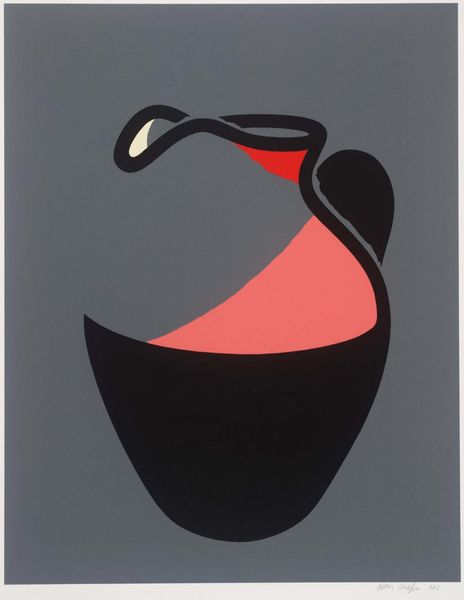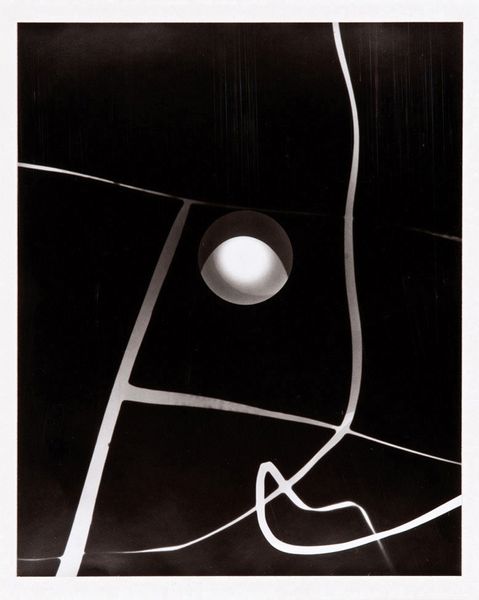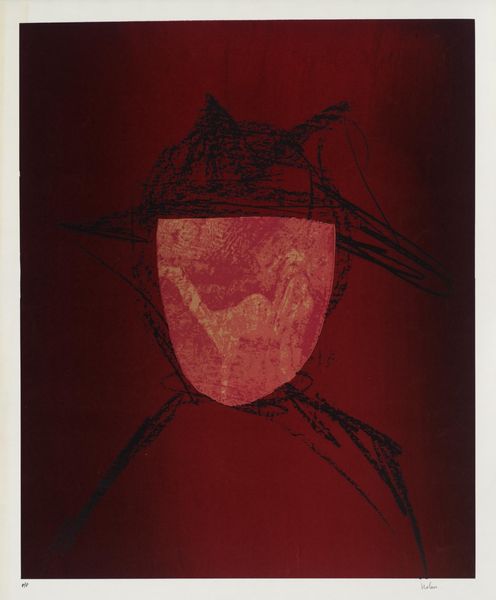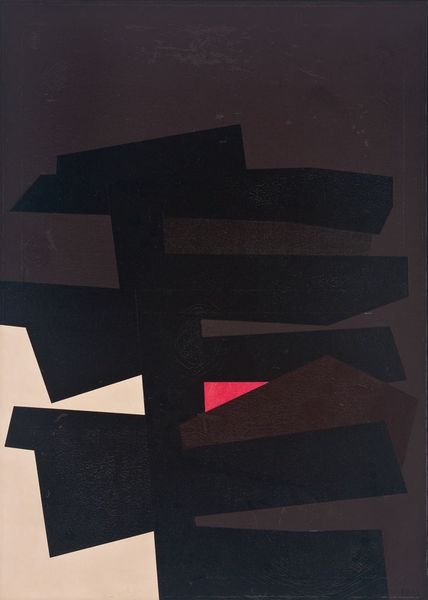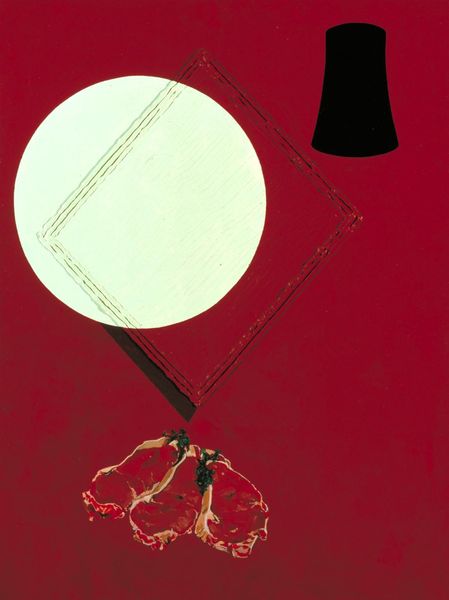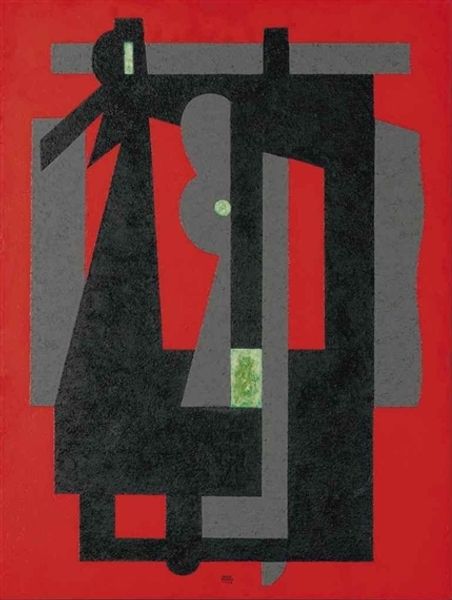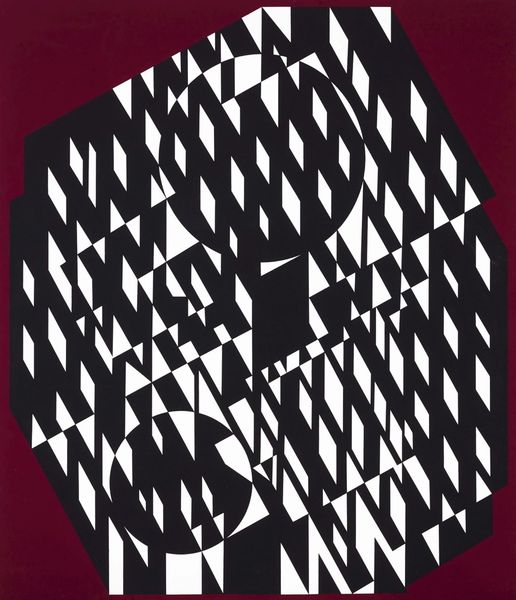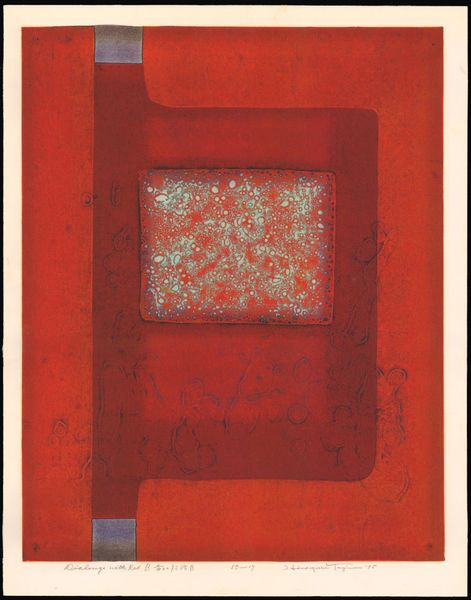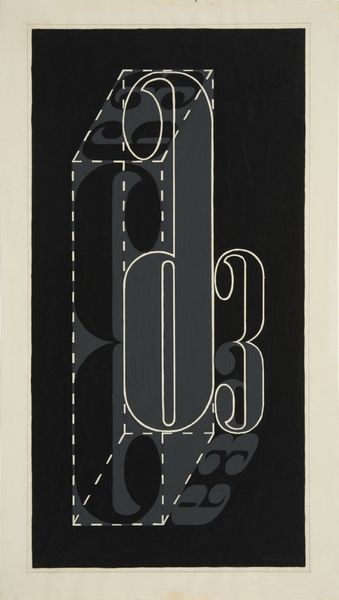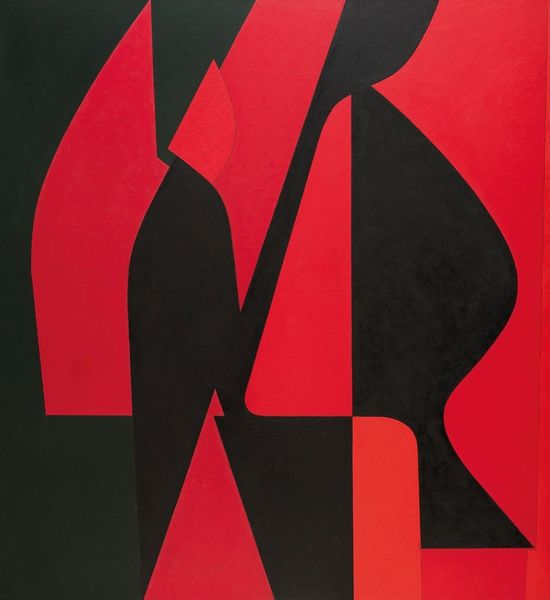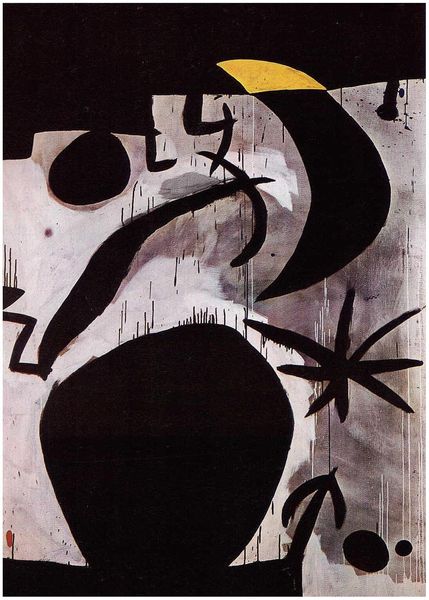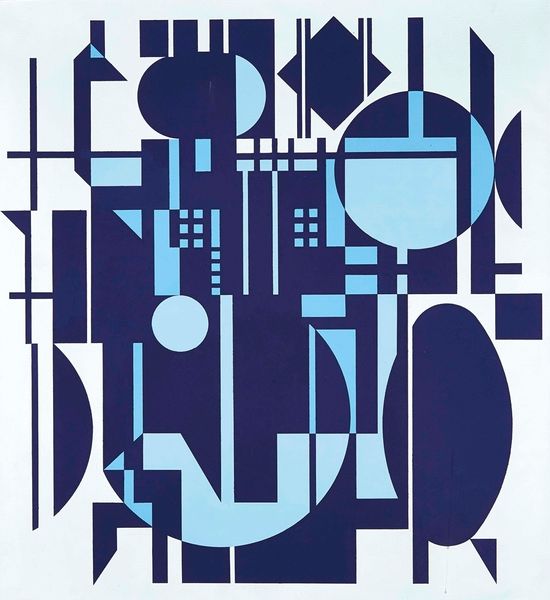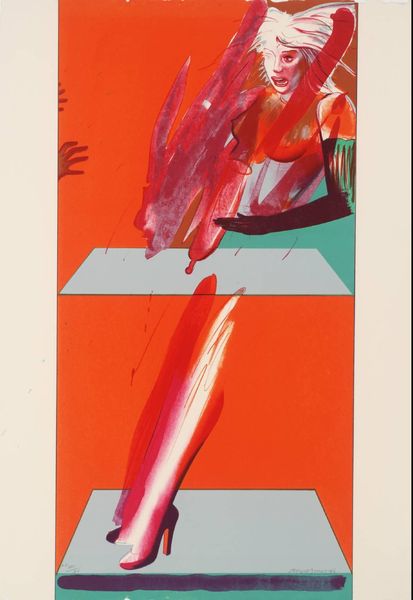
photography
#
still-life
#
digitally generated fractal art
#
glitch
#
goth
#
pop art
#
mixed mediaart
#
photography
#
blackness and void
#
spray can art
#
gestalt
#
digital montage
#
abstract character
Copyright: Cassandre,Fair Use
Editor: Cassandre's "Nicolas Version Face" from 1935, a photograph depicting a stylized wine glass filling up. The stark contrast and geometric shapes give it a very bold and modern feel, even for its time. How do you interpret this work within its historical context? Curator: Well, looking at this image through a historical lens, we must remember that Cassandre wasn't just an artist; he was a key figure in advertising. He was actively shaping public imagery and consumption habits. Consider the Art Deco movement. It heavily influenced commercial design; we can see that reflected in the streamlined forms of the bottle and glass. How do you think it reflects its position as a poster? Editor: I see it! The sharp, clear lines and minimal details would grab your attention even from a distance. Almost like a logo before logos were really a thing! Was the cultural shift towards mass advertising embraced, or was it seen with a critical eye? Curator: It's complex. Mass advertising was both celebrated for fueling economic growth and criticized for manipulating desires. Cassandre's work sits right at the intersection of those viewpoints. The “Nicolas” company paid for this image – that speaks volumes about their aims, and Cassandre’s acceptance of them. Do you think such considerations add value or reduce the ‘purely artistic’ integrity of this artwork? Editor: That's a tough question. It definitely makes me think about who benefits from art and how images can be used. I never thought of advertising this way, as something shaping public perception so intentionally. Thanks, I hadn't fully considered Cassandre's context in the public sphere. Curator: And I'm glad to see how this changes the image and your perception of it, when considered from its historic position. It proves how deeply art is interwoven with cultural and economic factors.
Comments
No comments
Be the first to comment and join the conversation on the ultimate creative platform.
